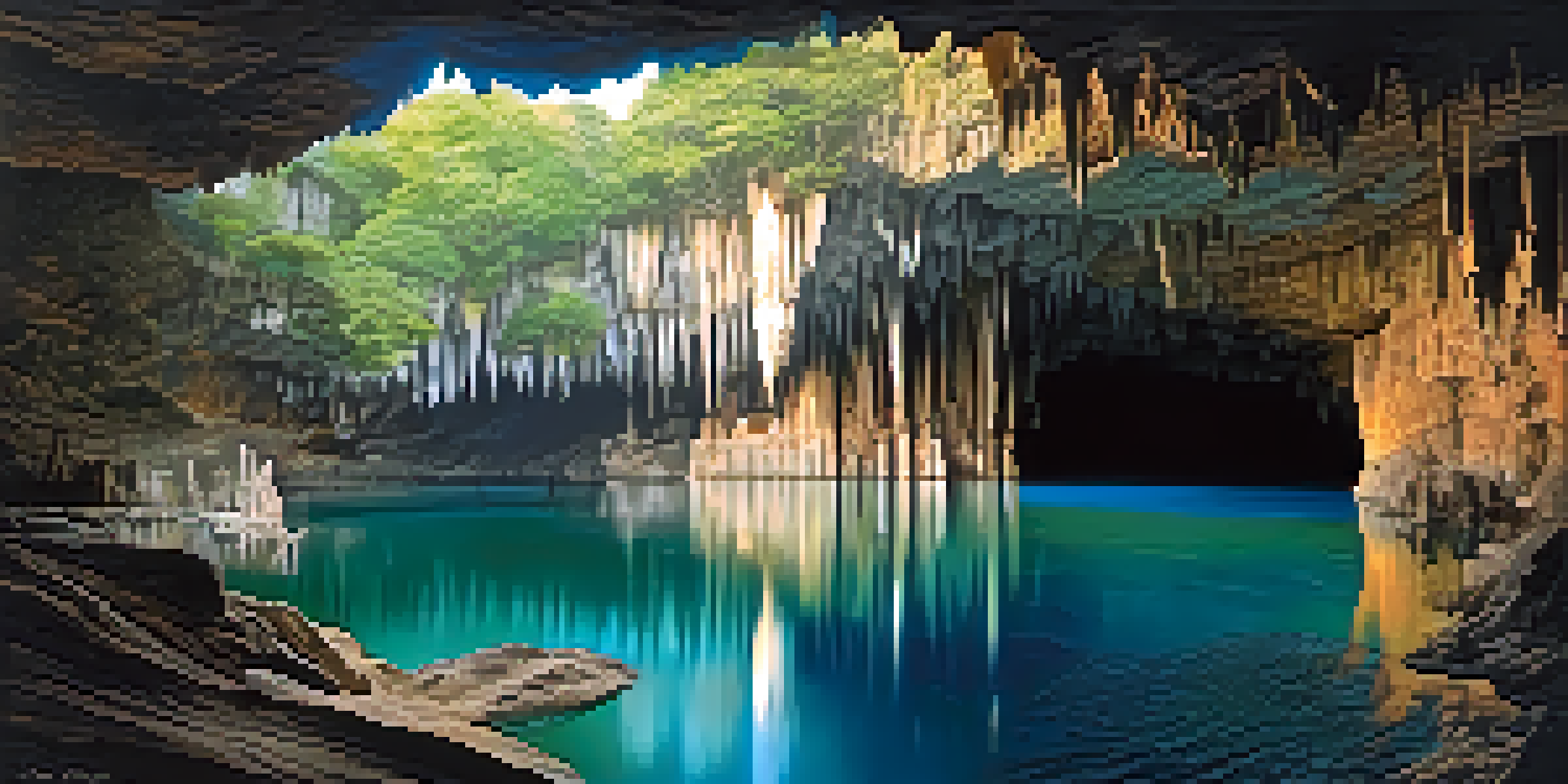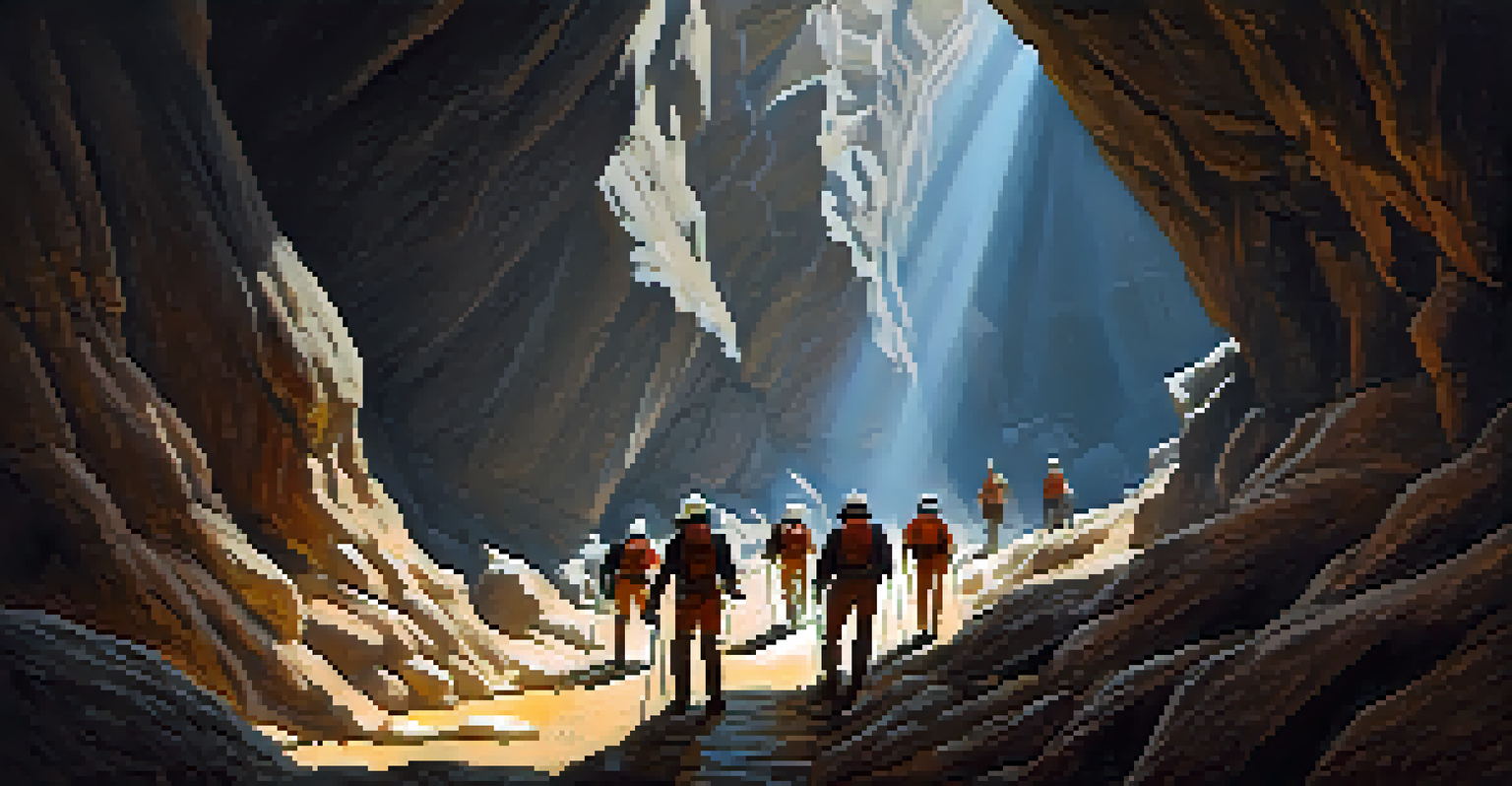Exploring Brazil's Stunning Caves: A Geologist's Guide

Introduction to Brazil's Geological Wonders
Brazil is home to some of the most stunning caves in the world, each carved by nature over millions of years. These geological wonders offer a glimpse into the Earth's history and provide unique ecosystems. From limestone formations to extraordinary stalactites, the caves are a testament to the power of natural forces at work.
Nature is not a place to visit. It is home.
As we venture deeper into these caves, we’ll explore not just their beauty but also the geological processes that created them. Understanding the formation of these caves can give us insight into the broader geological landscape of Brazil. It's like reading a book written by the Earth itself, where each layer tells a story.
For geologists and nature enthusiasts alike, Brazil's caves present an exciting opportunity for exploration and discovery. Whether you're planning to hike through them or simply admire their grandeur, these caves are a must-visit destination.
The Unique Formation of Brazil's Caves
The majority of Brazil's caves are formed through a process called karstification, which occurs when slightly acidic water erodes soluble rocks like limestone. Over thousands of years, this process creates stunning underground chambers and intricate tunnels. The result is a breathtaking landscape filled with natural sculptures, like nature's very own art gallery.

Take, for example, the Gruta do Lago Azul, or Blue Lake Cave, known for its mesmerizing blue waters that reflect the sunlight filtering through the cave's entrance. This stunning visual is a product of the unique mineral content in the water, showcasing nature’s artistry. It’s not just a cave; it’s an experience that captivates all who visit.
Brazil's Caves: Nature's Masterpieces
Brazil's caves showcase stunning geological formations, created through processes like karstification, that reveal the Earth's history.
Understanding these geological processes enhances our appreciation of these natural wonders. Each cave carries with it a narrative of the Earth’s history, reminding us of the incredible forces that shape our planet.
Top Caves to Visit in Brazil
Brazil boasts a plethora of caves that cater to both adventurous explorers and casual visitors. One of the most famous is the Caverna do Diabo, or Devil's Cave, located in São Paulo state. This cave features a massive entrance and an extensive network of tunnels, making it a favorite among spelunkers and tourists alike.
In every walk with nature one receives far more than he seeks.
Another noteworthy cave is the Grutas de Maquiné, renowned for its stunning stalactite and stalagmite formations. The intricate designs resemble frozen waterfalls and are a sight to behold. These caves not only offer beauty but also opportunities for guided tours that educate visitors about their geology.
For those seeking a more remote experience, the Caverna de Botuverá provides a more rugged adventure. It’s a place where nature feels untouched, offering a unique chance to connect with the wild beauty of Brazil.
Ecological Significance of Brazilian Caves
Beyond their stunning visuals, caves play a crucial role in maintaining local ecosystems. They serve as habitats for various species, including bats, insects, and even rare plants that thrive in the dark, humid environments. The biodiversity found within these caves can be astonishing, making them valuable for scientific research.
Moreover, these ecosystems are delicate and can be easily disrupted. Understanding the ecological significance of caves helps us appreciate the need for conservation efforts. Protecting these natural habitats ensures that future generations can continue to explore and learn from them.
Ecological Importance of Caves
These caves provide vital habitats for diverse species, emphasizing the need for conservation to protect fragile ecosystems.
In essence, the caves of Brazil are not just geological formations; they are living ecosystems that contribute to the overall health of our planet. By preserving these areas, we are safeguarding biodiversity and the interconnectedness of life.
Safety Tips for Cave Exploration
Exploring caves can be an exhilarating adventure, but safety should always be a priority. It’s essential to wear appropriate gear, such as sturdy shoes and helmets, to protect yourself from potential hazards. The terrain can be uneven and slippery, so being cautious is key.
Additionally, always explore caves with a guide or a group. Not only does this enhance safety, but it also provides valuable insights into the cave's features and history. Guides often share fascinating stories and facts that can enrich your experience.
Lastly, be mindful of your surroundings. Avoid touching delicate formations and respect the natural environment. By being responsible adventurers, we can ensure that these incredible caves remain intact for years to come.
The Cultural Impact of Caves in Brazil
Brazilian caves are not only geological marvels but also hold significant cultural importance. Many indigenous communities have historical ties to these caves, viewing them as sacred spaces. They often contain ancient petroglyphs and artifacts that provide insight into the region's rich cultural heritage.
These caves serve as a bridge between the past and present, connecting us to the stories of those who came before us. Visiting these sites can foster a deeper understanding and respect for the cultural narratives tied to them, enriching our overall experience.
Caves as Cultural Heritage Sites
Many Brazilian caves hold significant cultural value, with historical ties to indigenous communities and ancient artifacts.
Incorporating cultural elements into cave exploration can transform a simple visit into a profound journey. It allows us to appreciate the multifaceted nature of these sites, reminding us that they are more than just natural wonders—they are part of a larger tapestry of life.
Conclusion: The Allure of Brazil's Caves
In conclusion, Brazil's stunning caves offer an extraordinary blend of geological beauty, ecological significance, and cultural richness. They are a testament to nature's artistry and the Earth's history, inviting adventurers and nature lovers alike to explore their depths. Each cave tells a unique story, waiting to be discovered.
Whether you're drawn to the breathtaking formations, the diverse ecosystems, or the cultural heritage, there is something for everyone in Brazil's caves. As you plan your next adventure, consider immersing yourself in these natural wonders that promise unforgettable experiences.

Ultimately, exploring these caves is not just about the thrill of adventure; it's about connecting with nature and appreciating the intricate balance of our planet. So pack your gear, gather your friends, and get ready for an exploration that will leave you in awe.